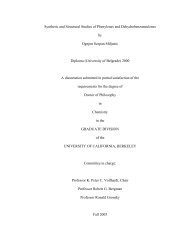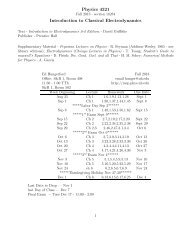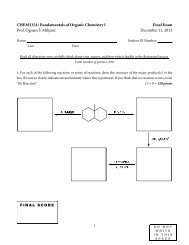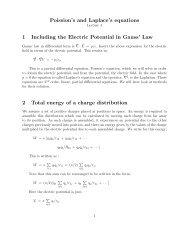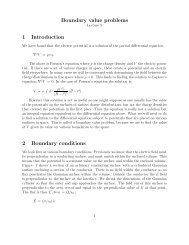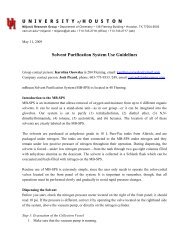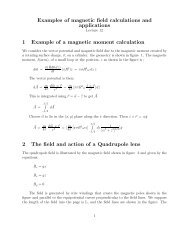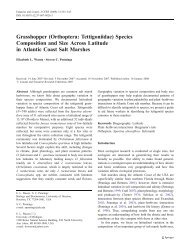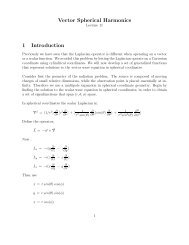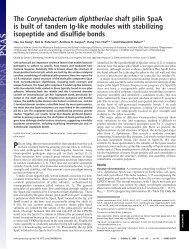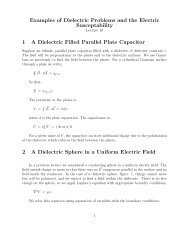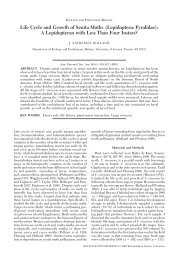Scattering 1 Classical scattering of a charged particle (Rutherford ...
Scattering 1 Classical scattering of a charged particle (Rutherford ...
Scattering 1 Classical scattering of a charged particle (Rutherford ...
You also want an ePaper? Increase the reach of your titles
YUMPU automatically turns print PDFs into web optimized ePapers that Google loves.
sClosestApproachθxθθFigure 2: The geometry to convert the angle used to solve the equation <strong>of</strong> motion to the<strong>scattering</strong> angle2 Solution to the <strong>scattering</strong> equationIn the above section we considered <strong>scattering</strong> <strong>of</strong> a <strong>particle</strong> from another <strong>particle</strong> when theinteraction between them was the Coulomb force (represented as will be seen later, bythe exchange <strong>of</strong> a virtual photon). In this section we develop a general description <strong>of</strong> the<strong>scattering</strong> <strong>of</strong> a classical, real photon from a charge.This <strong>scattering</strong> can be considered as a solution to the wave equation. Although we will usethe scalar wave equation, recognize that a vector such as an EM field can be considered asa set <strong>of</strong> scalar components. The wave equation has the form;[∇ 2 − (1/c 2 ) ∂2∂t 2 ]ψ = S(⃗r, t)In the above, ψ is the wave amplitude and S the <strong>scattering</strong> center, or in this case the source<strong>of</strong> the scattered wave. In the case <strong>of</strong> EM <strong>scattering</strong>, the source <strong>of</strong> the scattered wave dependson the strength <strong>of</strong> the incident wave so we rewrite this term as S → Sψ. In the <strong>scattering</strong>region (ie as r → ∞) the solution, ψ, consists <strong>of</strong> an incident wave plus an outgoing sphericalwave. <strong>Scattering</strong> assumes that the the source term is localized so that sufficiently far awaythis term → 0 and waves in this region are solutions to the homogeneous wave equation.Now we also assume that the source ands solution are harmonic in time, ψ(⃗r, t) → ψ(⃗r)e iωtwhich removes the time dependence <strong>of</strong> the equation. The full wave equation is then;[∇ 2 − k 2 ]ψ = S(⃗r)ψThe incident wave has the form <strong>of</strong> a plane wave solution;3




